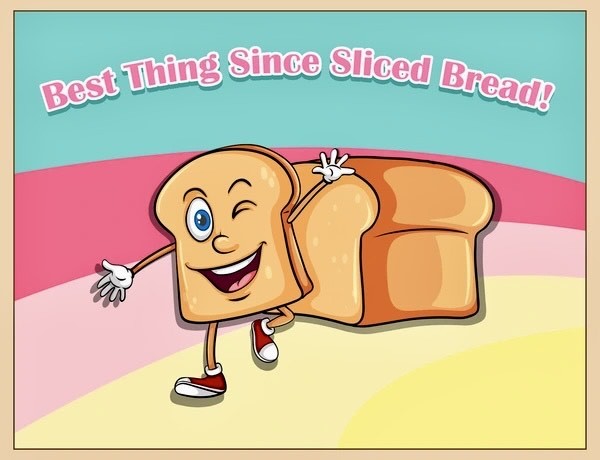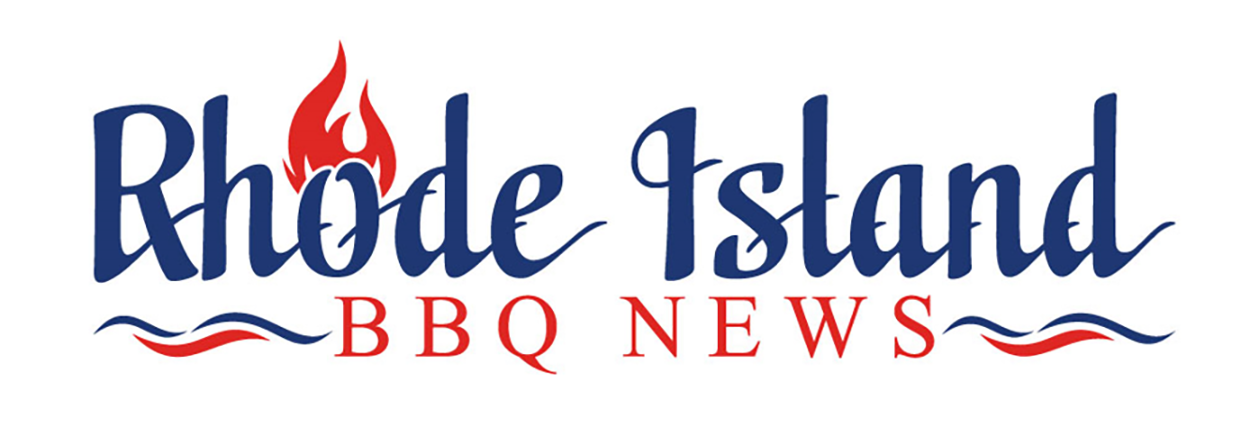
White Bread and BBQ are BFFs! The history of white bread in BBQ Culture is an elemental topic. It is a tradition that you NEED to know about! As stated by www.southernliving.com “When you order a platter of BBQ, you likely expect to see brisket and ribs…and classic BBQ side dishes like Mac-N-Cheese and potato salad… But at many BBQ joints your plate will also come adorned with several pieces of simple white bread! This BBQ Add-On can seem superfluous –who is really craving white bread when you’re eating saucy pulled-pork and perfectly smoked brisket? …But according to the experts, white bread and BBQ have a long and distinguished history together!” As legend has it, butchers started selling BBQ as “a side-hustle” in the late 1800s. Customarily, because butchers did not offer any side-dishes, patrons would complete their BBQ spreads with easily procured, shelf-stable accompaniments—such as pickles and onions, and of course, white bread!


BBQ professionals generally agree that the white bread tradition began in Central Texas and dates back to the 19th century. “Barbecue is served with white bread because of how inexpensive white bread is. We can think of the early days of Texas BBQ as a ‘Ploughman’s Lunch,’” explains Evan LeRoy, co-owner and BBQ Pit Chef of “LeRoy & Lewis,” in Austin, Texas.
www.leroyandlewisbbq.com “The Ploughman’s Lunch” has a history rooted in providing sustenance for laborers, particularly farmhands. The idea of a ploughman or a farmer eating bread, cheese, and beer or cider in the fields at midday is a long-standing one, likely dating back centuries. The Ploughman’s Lunch was a practical and filling meal that could easily be carried from home and consumed in the fields in the middle of the workday. Later, The Ploughman’s Lunch was considered a rustic “Classic British Pub Meal,” consisting of bread, cheese, and pickles or onions, and a mug of beer or cider. The Ploughman’s Lunch made its way onto Pub luncheon menus as a simple, hardy and inexpensive meal. Below, please find a painting by German Artist, Otto Strutzel, depicting a farmer resting with his oxen after ploughing a field, entitled: “Pflugender Bauer bei der Rast,” translated to English meaning: “Ploughing Farmer at Rest.” The earliest known oil painting by him dates from 1869, and he painted regularly until his death in 1930.

One of the oldest traditions in Texas BBQ is the pile of sliced white bread served with your order of smoked meats and side-dishes. This tradition is said the date to late 1800s, when Central Texas meat markets would “throw in some white bread as filler for the relatively skimpy portions of meat. Sliced white bread is still served by default at many of the older BBQ joints in Texas and is still a useful ingredient,” says www.houstonchronicle.com You can “grab a slice of white bread, pile on sliced brisket, add sauce and you’ve got an impromptu BBQ sandwich…or swaddle a whole link of sausage in sliced white bread –known as ‘A Wrap-Around,’ –and take it away for easy eating on the run!”



Sothern Living Magazine extends to explain; “Because meat markets weren’t always able to source enough beef and pork to fill the platters in past generations, they looked for other ways to fill the space,” (on the BBQ platters.) Pit Chef LeRoy continues, “they accomplished that goal by creating plates made up of some meats, some white bread, and some pickles. Mass-produced white bread was cheap and readily available, so it was easy to hand the bread out with the smoked meats…Plus, it made a handy vehicle for sopping up sauce and meat drippings. As BBQ cuisine grew in popularity, the tradition stuck and evolved. White bread and BBQ may have first united in Central Texas, but this service style soon expanded elsewhere. With the popularity of Texas-Style BBQ all over the country, I’ve seen white bread on plates and trays in most states,” says Pit Chef Evan LeRoy.

Shannon Bingham is the Executive Chef at “Devil Moon Barbecue,” in New Orleans, Louisiana, and he agrees that a few slices of “white bread BBQ platters feels like a quintessentially Central Texas move, but there are old Southern staples, like ‘Dreamland,’ in Tuscaloosa that I think have some claim to the practice as well.” Bingham recalls a childhood memory and describes a long-gone BBQ spot, “Podner’s” in New Orleans “that would give you a bag of white bread INSTEAD OF NAPKINS to clean their incredibly saucy BBQ from your hands. Not a practice that I have seen anywhere else or since, but I thought that it was incredible fun in my youth!” Chef Bingham also thinks that the usage of white bread in BBQ has spread to other Southern BBQ Regions has “a lot to do with the popularity of BBQ Sauces in places like Alabama, Tennessee and Georgia. I’m not a big BBQ Sauce person—but the experience at Dreamland in Tuscaloosa, where they give you a basket of white bread and a side of warm sauce is a pretty transcendent sauce-MOPPING EXPERIENCE!” Dreamland Bar-B-Que is known for its slow-cooked, hickory-smoked ribs, created by original owner, John “Big Daddy” Bishop in 1958. A brick-mason, John Bishop built the crimson-colored cinderblock building as well as the original BBQ Pit himself. “Big Daddy’s” meaty, hickory-smoked ribs soon had people clamoring for MORE BBQ! Shortly thereafter, Dreamland Bar-B-Que became something of a regional phenomenon. As Dreamland Bar-B-Que expanded with multiple locations over the next 35 years, the BBQ menu stayed the same:
- Ribs
- BBQ Sauce
- Sunbeam White Bread
- Chips
- Soda
THAT. IS. IT. Only 5 items were on the restaurant menu, until the Mobile, Alabama location came along in 1995. “The people of Mobile, Alabama basically said, ‘we have to have side dishes; or we’re not coming back!’” states CEO Betsy McAtee. The CEO recalls, the patrons and customers “would actually bring their own side dishes into the restaurant!” By 1997, side dishes like baked beans and potato salad were added to the menu!



When it comes to the “Technical Purpose” of a slice of white bread on a BBQ platter, white bread is primarily used for 2 reasons:
- White Bread can be “A Landing Zone” for meat and can serve as a utensil of sorts. On a BBQ platter, the white bread elevates the meats and makes them look more appetizing and gives the BBQ plate an appearance of “More Food.” White Bread has been called, “An Edible Napkin!” Additionally, the white bread soaks up the meat juices and is delicious to eat at the end of the BBQ meal, as well as scoops up saucy BBQ deliciousness as a make-shift utensil.
- White Bread can be utilized as “A Foldee;” BBQ Chefs speak in favor of using white bread as “A Foldee: it is common practice for diners to make a foldover with a piece of white bread, meat, sauce, and pickles or onions in order to make a blended bite.” The Foldee can help people make a more filling meal out of a BBQ plate. Furthermore, as an “On-The-Go” option, commodity white bread has just enough pliability and structure and a mild-enough flavor that it will let a slice of brisket, a forkful of pulled pork, or bits and pieces of BBQ ribs along with the slight sopping of their meat juices, sumptuously shine in a way that fancier bread does not allow!

“Tucked amid the glorious red sauces and glistening browned meats, it’s easy to pass over the plain slices of white bread that accompanies a tray of BBQ. Despite its ho-hum appearance, the carb is actually loaded down in history…and regardless how it features in your BBQ plans, the white bread’s presence is a visual reminder of the meal’s humble roots,” quotes www.foodrepublic.com As the Central Texas BBQ tradition expanded across the country, in order to make the most of their unsold stock, butcher shops, markets and stores began pairing smoky pork and beef with white bread. White bread has an extended shelf-life, is wonderfully neutral in flavor, it is a filling carb, and best of all for consumers, it is cheap! In 1921, Taggart Baking Company in Indianapolis first began factory producing white “Wonder Bread.” Wonder Bread became known for its soft, pillowy texture, achieved by treating the flour with and using chemicals to prevent the bread from drying out. Elmer Cline was the VP of Merchandising and Development at The Taggart Baking Company. Elmer attended and was inspired by the International Balloon Race at the Indianapolis Motor Speedway; and he became “filled with wonder” by the scene of hundreds of hot-air balloons creating “a kaleidoscope of color” resulting in the iconic red, yellow, and blue balloons featured on the Wonder Bread logo! On May 21st, 1921 Wonder Bread made its debut! By 1930, Wonder Bread was one of the first companies to sell bread nationwide.



Sliced bread revolutionized both the baking industry itself, as well as our daily lives. Otto Rohwedder, a jeweler from Davenport, Iowa, invented the first automatic bread-slicing machine. First introduced in 1928, by the Chillicothe Baking Company, the automatic bread-slicing machine quickly became a popular convenience, transforming the bread industry and drastically increasing bread consumption. On July 7th, 1928, the first commercially sliced bread, “Sliced Kleen Maid Bread,” was sold by the Chillicothe Baking Company, in Missouri. Expanding sliced bread sales meant a boost in condiment sales; from butter, to jam, to peanut butter, and jelly. Sliced bread became a symbol of modernity. In 1928 when sliced bread was first advertised, its slogan was “the greatest step forward in the baking industry since bread was wrapped.” By 1933, approximately 80 percent of all bread sold in the United States was pre-sliced…Leading to the idiom (you know what I’m going to reveal here!)…That infamous phrase, that celebrated expression: “THE GREATEST THING SINCE SLICED BREAD!” The photo below depicts the “New Electrical Bread Slicing Machine!”


“The impact of The White Bread Tradition lingers on, as most die-hard BBQ Fans know!” Whether you are utilizing the fluffy white slices that surged in popularity after the invention of mass-produced sliced bread in the 1920’s or the thick-cut Texas Toast-Style of white bread slices, white bread is an excellent vessel and a worthy complement on your BBQ plate for mopping up flavorful BBQ bites and soaking up every last bit of your saucy, finger-licking good BBQ.



